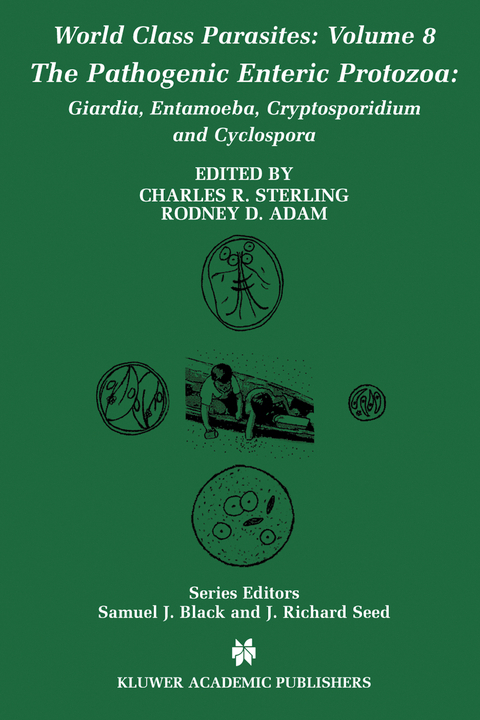
The Pathogenic Enteric Protozoa:
Springer-Verlag New York Inc.
978-1-4020-7794-4 (ISBN)
Charles R. Sterling is a Professor in the Department of Veterinary Science and Microbiology at the University of Arizona, Tucson, Arizona. Rodney D. Adam is a Professor in the Department of Microbiology and Immunology at the University Of Arizona Health Science Center, Tucson, Arizona.
Epidemiology and Zoonotic Potential of Giardia Infections.- Entamoeba Histolytica and Entamoeba Dispar, the Non-Identical Twins.- Epidemiology and Strain Variation of Cryptosporidium.- Cyclospora Cayetanensis: An Emergent and Still Perplexing Coccidian Parasite.- Antigenic Variation of the VSP Genes of Giardia Lamblia.- Pathogenisis and Immunity to Entamoeba Histolytica.- Innate and T Cell-Mediated Immune Responses in Cryptosporidiosis.- Rationale Approaches to Treating Cryptosporidium, Cyclospora, Giardia and Entamoeba.- Inactivation and Removal of Enteric Protozoa in Water.- Monitoring of Giardia and Cryptosporidium in Water in the UK and US.- Entamoeba Histolytica Genome.- Cryptosproridium Parvum Genomics: Impact on Research and Control.
| Reihe/Serie | World Class Parasites ; 8 |
|---|---|
| Zusatzinfo | XIII, 169 p. |
| Verlagsort | New York, NY |
| Sprache | englisch |
| Maße | 155 x 235 mm |
| Themenwelt | Medizinische Fachgebiete ► Innere Medizin ► Gastroenterologie |
| Medizin / Pharmazie ► Medizinische Fachgebiete ► Mikrobiologie / Infektologie / Reisemedizin | |
| Naturwissenschaften ► Biologie ► Mikrobiologie / Immunologie | |
| Naturwissenschaften ► Biologie ► Zoologie | |
| ISBN-10 | 1-4020-7794-7 / 1402077947 |
| ISBN-13 | 978-1-4020-7794-4 / 9781402077944 |
| Zustand | Neuware |
| Haben Sie eine Frage zum Produkt? |
aus dem Bereich


